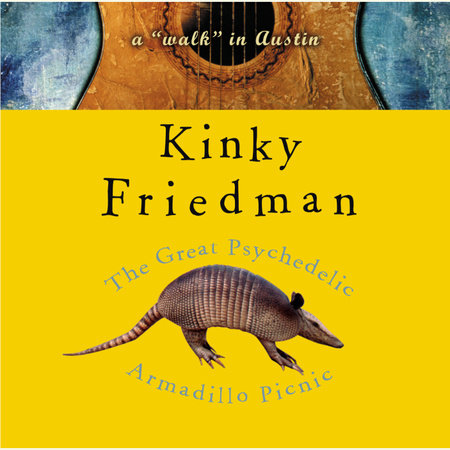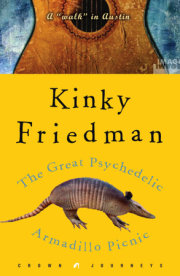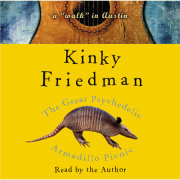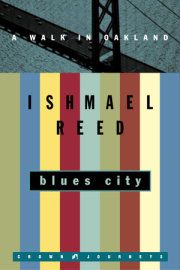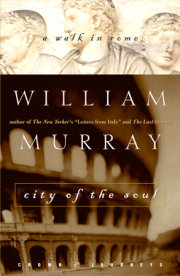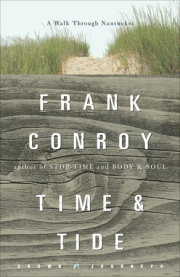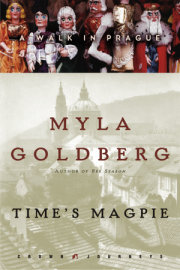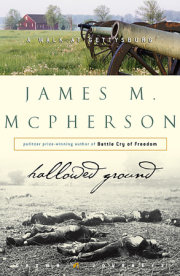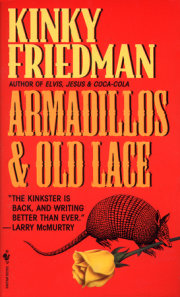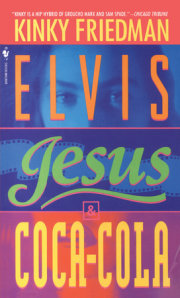The Barenaked Essentials
Like most other busy cities these days, Austin is not very effectively traversed by foot. Indeed, if you're crazy enough to try, you might very well find yourself getting T-boned by a shuttle bus. There are places you can walk, jog, loiter, or hop around angrily in a circle, and we will get to these momentarily. But you must understand that "a walk in Austin" is primarily a spiritual sort of thing. You're going to need a four-wheeled penis of some kind. If you want to fit in perfectly, I'd recommend a pickup truck with a "God Bless John Wayne" bumper sticker.
As long as we're on the subject, what, exactly is Austin? If you were to round up a flock of random Austinites from around the city and present them with that question, you would get such answers as "home of the University of Texas"; "the live music capital of the world"; "birthplace of Dell Computers." Oddly enough, it is unlikely that any of those Austinites would say that Austin is the capital of Texas, or that Austin used to be a settlement named Waterloo, or that a man with the unlikely name of Mirabeau B. Lamar led the fight to make Austin the Capital of the Republic of Texas over Waco and Houston. See, we Austinites don't know enough about the background of our fair city, but you, dear visitor, will not be so impaired. Read on for the barenaked essentials of Austin, intended to give you a bit of background on the town O. Henry nicknamed "The Violet Crown."
Once upon a time, when relations between cowboys and Indians were only slightly better than the level of violence in a modern American city, a man drank an entire bottle of mescal, ate the worm at the bottom, and got so high he needed a stepladder to scratch his ass. The man was named Mirabeau B. Lamar. The year was 1836. It was a good year for mescal. It was also a good year for Austin, in spite of the fact that it wasn't there yet.
Texas had just won her independence from Mexico. Eighty-four years later the future first female governor of Texas, "Ma" Ferguson, would say, "If English was good enough for Jesus Christ, it's good enough for Texas!"
The new nation was christened the Republic of Texas, and with open arms she welcomed settlers to her ample bosom. In an area roughly located at the nipple of this bosom, a camp town named Waterloo grew. Among Waterloo's new citizens was former Georgian Mirabeau B. Lamar. Despite being from Georgia, Lamar was a true renaissance man who excelled at horseback riding and fencing, wrote poetry, painted in oils, read voraciously, and collected matchbooks from many restaurants. He became a senator for Georgia by the time he was thirty-one, and his career in Georgia politics looked promising until his wife, Tabitha, stricken with tuberculosis, was bugled to Jesus in 1830. Mirabeau was devastated by her death, and like any poet worth his iambic pentameter, he used his grief to write several of his best-known poems (among them An Evening on the Banks of the Chattahoochie and Thou Idol of My Soul). In the meantime his political career stagnated. Lamar's friend James Fannin had a home in the new Republic of Texas, and he invited Lamar to visit in hopes the trip would lift his pal out of despair.
Like a lot of people who visit Texas, Mirabeau fell in love with the state and decided to stay. He was in Georgia preparing for his move to Texas when he heard about the massacres at the Alamo, during which Davy Crockett and Jim Bowie were killed, and at Goliad, where his friend Fannin and 341 other Texas freedom fighters were taken prisoner and ordered executed by General Santa Anna.
The news spurred Lamar to immediately cut buns back to Texas to join the revolution as a private. He was soon commissioned a colonel on the field of San Jacinto just before the famous battle. The gentleman poet distinguished himself as a soldier on the battlefield by his bravery and quick actions. Texas came away from the battle victorious, and so did Lamar. With his political career back on track, he was made Secretary of War in the cabinet of ad interim President David G. Burnet. In the fall of 1836, in the Republic's first presidential election, Lamar became the vice-president of Texas. Sam Houston, a major general who led Lamar and other soldiers to victory at the Battle of San Jacinto, was elected president.
Sam Houston was one of the great characters in Austin's history. As an adolescent he ran away from home to live among the Cherokees, who adopted him and gave him the Indian name Colonneh, or "Raven." Young Sam viewed the chief of the band, Oolooteka, as his Indian father, and the tribe much as a surrogate family. He found peace living la vida Indian and he enjoyed it for several years before he decided it was time to hang up his tomahawk and strike out on his own.
The inner peace Houston found with the Cherokees was quickly sucked dry by the white man's world. In 1829, after a failed marriage and the subsequent nosedive of his political aspirations due to rumors of his infidelity and alcoholism, Houston returned to Chief Oolooteka's band and stayed for three years. He tried to revisit the tranquillity he had enjoyed with the tribe in his youth, but he drank so heavily that he allegedly received the nickname "Big Drunk." Somewhere between drinking and brawling, Houston married a Cherokee woman from the tribe (Tiana Rogers, a distant relative of Will Rogers) and worked as a commercial agent for his adopted clan. While Sam was on official business in Washington, an unfortunate congressman accused him of corruption and Houston rebutted the charge by whupping the accuser's ass right there on the street. The ensuing public trial put Houston back at center stage, a move he later said gave him back his will to live. He was found guilty for contempt of Congress and given a five-hundred-dollar fine. Houston's former commander during the War of 1812, Andrew Jackson, now the U.S. president, paid Houston's fine on his last day in office.
By 1836 the brawling, womanizing, alcoholic Sam Houston rode the wave of popularity as "Old Sam Jacinto" (for his successful defeat of Santa Anna's army at the battle of San Jacinto) and served as president of Texas for two terms.
In 1838, after Houston's final term in office, Lamar decided to run for president. He won the office after the other two candidates both committed suicide before election day. It was this renaissance man from Georgia who began to champion the fledgling settlement of Waterloo to be the official capital of Texas.
President Lamar inherited a Texas that had no money, no commercial treaties, no international recognition (except from the U.S.), and no chance of annexation by the United States. Texas was under constant Indian attack, and Mexico continued to be a threat. Lamar, however, was a romantic. He envisioned a Texas whose borders would reach the Pacific Ocean. He wanted Waterloo to be the new capital, and he wanted it named after Stephen F. Austin, the man considered the founder of Anglo-American Texas.
Austin had died in service as secretary of state in 1836 at the age of forty-three. He is remembered in Texas history for his many contributions to the state, which included carrying out his father Moses' plans to establish an American colony in the Mexican province of Tejas. Stephen Austin's skillful diplomacy averted aggression from Mexico, who resented American presence on its soil. Rather than call upon his settlers to take up arms against Mexico, Austin believed there was still a chance to persuade the government peacefully to allow his colony to stay. He traveled all the way to Mexico City to secure a new law confirming his right to colonize his father's land. A large number of settlers from the United States moved south to join his new colony. Austin's unassuming presence and kindly manner were deeply respected by even the most unruly colonists in the settlement. For his tireless efforts on behalf of Texas, it was fitting that Austin be given the honor of having the capital of Texas named for him.
In addition to making Waterloo the capital of the new republic, Lamar also wanted to establish a system of education that would be funded by the state's ample wealth in land. He passionately believed in a strong education system for all the citizens of Texas; he would later be remembered in history as "the Father of Texas Education."
Sam Houston felt that Waterloo was too far from the coast and too close to Mexico to be the capital of the Republic of Texas. He felt that the city of Houston would be a better placement strategically, but Lamar prevailed and Waterloo, by then called Austin, temporarily became the capital in 1839.
The entire government of the Republic of Texas arrived from the city of Houston in oxcarts to set up shop in Austin. Edwin Waller, the future first mayor of Austin, was hired to lay out the street plan for the city, and it remains mostly intact today from First street to 15th Street downtown. The struggle to make Austin the permanent capital of Texas lasted for thirty years; in 1872, Austin finally won out over the cities of Houston and Waco by popular vote to become the official capital of the twenty-eighth state of the Union. In later years, Austin's population boomed. Because of the new Houston and Texas Central Railway, Austin became a huge trading center. An international population of newcomers made the city their home, creating the diversity that still exists today. Lamar's dream of a solid education system was realized by 1881, when Austin was chosen as the site for the new University of Texas (see "Austin Landmarks"). That same year the public school system was started. Austin was well on her way to becoming the city whose personality nurtured the likes of O. Henry, Janis Joplin, Michael Dell, and, of course, myself.
Now, as we creep into the twenty-first century, Austin has grown to a population of roughly 657,000. It is the fourth-largest city in Texas and the sixteenth-largest city in the United States. Austin serves as the seat of Travis county (named after one of the defenders of the Alamo, William B. Travis). The University of Texas at Austin is the flagship campus of the vast University of Texas system. Other institutes of higher learning include Austin Community College (called ACC), Concordia University, Houston-Tillotson College (founded in 1881), and St. Edward's University (founded in 1885). Austin has a hearty mix of educators, students, politicians, and lobbyists, as well as techno-geeks, actors, musicians, rascals, and transients. It is the self-proclaimed "live music capital of the world." The city's biggest employers, should you decide to extend your visit permanently, include the State of Texas, UT-Austin, Dell Computer, Motorola, IBM, and high-tech giant National Instruments. Austin is the home to several well-known directors such as Mike Judge (King of the Hill), Robert Rodriguez (Once Upon a Time in Mexico), Richard Linklater (Slacker) and Tobe Hooper (The Texas Chainsaw Massacre). The city hosts the annual Texas Book Festival as well as South by Southwest, which has become our own little Sundance, attracting films of all types from around the world.
Present-day Austin is situated on the Colorado River, with three lakes within the city limits: Town Lake, Lake Austin, and Lake Travis. We are also on top of the Balcones Fault (upon which we not so wisely placed IH-35). The geography of the city is varied. The eastern part of Austin is flat while the western part is scenic rolling hills. The main sector of Austin, simply called "Downtown" by locals, is about ten miles tall and three miles wide. The main north-south thoroughfares are Mopac/Loop 1; Lamar Blvd.; South First/Guadalupe; South Congress/
Speedway; and IH-35.
The main east-west thoroughfares are Koenig/290; 45th Street; 38th Street; Martin Luther King (MLK); Cesar Chavez; Oltorf; and Ben White (called 360 west of Mopac and Highway 71 east of IH-35). Any street preceded by "North" (as in North Lamar) is north of the Colorado River. Any street preceded by "South" (S. Congress) is south of the river. Austin streets have the alarming habit of abruptly changing names as you are driving down them. For example, Speedway becomes Congress south of MLK; Guadalupe becomes S. First south of the river; Mopac is also called Loop 1; and Koenig is also called Highway 290. The last thing you need to know about downtown streets is that most of them are one-way, except Congress. Even-numbered streets are westbound (like Sixth Street) and odd-numbered streets are eastbound (like Fifth Street). Guadalupe is two-way for most of the way except deep downtown between MLK and Cesar Chavez (where it is southbound only). Any good map of Austin will clear it up. Go get one.
Austin's neighborhoods are divided by the locals into the following:
Central Austin, or Downtown. This houses the Central Business District, the Capital Complex, the Entertainment District, and the University of Texas. Among the students, politicians, professors, transients, and business-droids you will find just about whatever you can imagine as far as hairstyle, clothing, body art, and pocket change go. You can come here to either stand out or blend in, whatever your pleasure may be.
East Austin. This area used to be the scary place where nice people didn't venture; some parts of East Austin are still like that, but for ethnic diversity, these neighborhoods east of IH-35 can't be beat.
West Austin. West of downtown to Lake Travis, these neighborhoods range from student rentals to some of the city's most exclusive gated communities.
North Austin. Many of Austin's new apartment complexes are located here. It used to be the boomtown area, but growth has been more northwest lately.
Northwest Austin. One of Austin's fastest-growing sectors. Features a lot of traffic, shopping, and tedium. Needless to say, I avoid it (but that's hard to do because I live there).
South Austin. The part of town people who don't live here love the most. Sometimes it's called "the real Austin." South Congress (or SOCO, but you will never hear me saying that), Shopping District, and older neighborhoods like Travis Heights and Zilker are located in this area. The legendary Continental Club is here, too.
An interesting historical sidenote here is that after the Civil War, Austin had a neighborhood area that was known as the "Freedman Towns" where former slaves freed during the Civil War settled. They were the communities of Clarksville, from West Lynn to the railroad tracks and from 10th to Waterson; Wheatville, bounded by Rio Grande and Shoal Creek on the east and west, and by 24th and 26th on the north and south; Masontown, covering the area between Third and Sixth and Chicon and Waller; and Kincheonville, in what is now southwest Austin.
Copyright © 2004 by Kinky Friedman. All rights reserved. No part of this excerpt may be reproduced or reprinted without permission in writing from the publisher.

